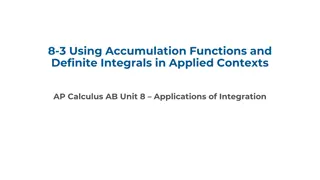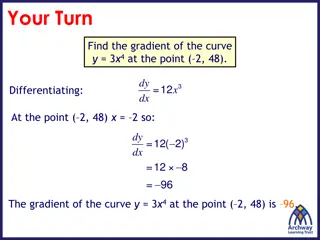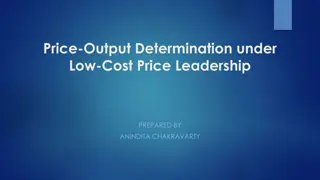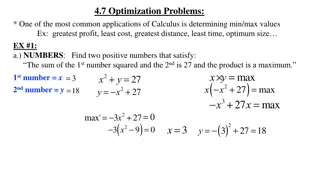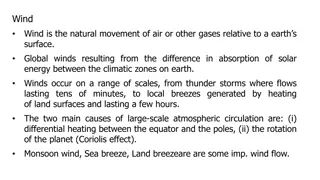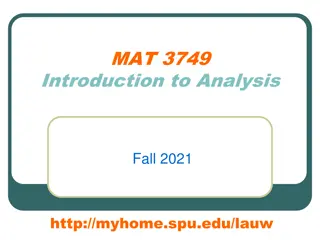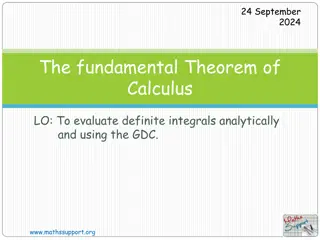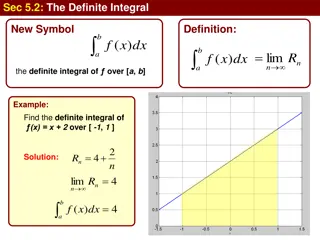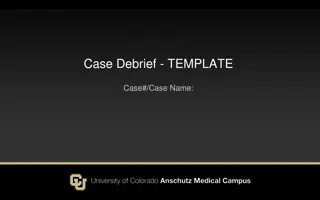Understanding Related Rates and Differentials in Calculus
Derivatives involve very small changes in variables, leading to differentials. Related rates in calculus help us find how variables change in relation to each other. Learn how to solve related rates problems step by step with examples involving volumes, radii, and rates of change.
Download Presentation

Please find below an Image/Link to download the presentation.
The content on the website is provided AS IS for your information and personal use only. It may not be sold, licensed, or shared on other websites without obtaining consent from the author. Download presentation by click this link. If you encounter any issues during the download, it is possible that the publisher has removed the file from their server.
E N D
Presentation Transcript
Differentials ? ? ?? ?? When we first started to talk about derivatives, we said that becomes when the change in x and change in y become very small. dy can be considered a very small change in y. dx can be considered a very small change in x. ( ) f x = y Let be a differentiable function. The differential is an independent variable. The differential is: dy dy ?? ?? dy = ?? dx ( ) x dx = f
Related Rates If we are pumping air into a balloon, both the volume and the radius of the balloon are increasing and their rates of increase are related to each other. However, it is much easier to measure directly the rate of increase of the volume than the rate of increase of the radius. In this section, we will learn: How to compute the rate of change of one quantity in terms of that of another quantity. In a related-rates problem, the idea is to compute the rate of change of one quantity in terms of the rate of change of another quantity which may be more easily measured. The procedure is to find an equation that relates the two quantities and then use the Chain Rule to differentiate both sides with respect to time.
Example 1: Consider a sphere of radius 10cm. If the radius changes 0.1cm (a very small amount) how much does the volume change? ?? = 0.1 ?? ?? =? 4 3 = 3 V r = r dr 2 4 dV ( ) 2 = 4 10cm 0.1cm dV = 40 cm 3 dV 40 cm 3 The volume would change by approximately
Example 2: Now, suppose that the radius is changing at an instantaneous rate of 0.1 cm/sec. At what rate is the sphere growing when r = 10 cm? ?? ??= 0.1??/sec ?? ??=? 4 3 = 3 V r dV dt dV dt dr dt = 2 4 r cm ( ) 2 = 4 10cm 0.1sec 3 cm sec dV dt = 40 40 cm /sec 3 The sphere is growing at a rate of
Example 3: Air is being pumped into a spherical balloon so that its volume increases at a rate of 100 cm3/s. How fast is the radius of the balloon increasing when the diameter is 50 cm? 4 3 = 3 V r 1 1 dr dt = = The radius of the balloon is increasing at the rate of 1/(25 ) 0.0127 cm/s. 100 4 (25) 2 25
Example 4: Water is draining from a cylindrical tank at 3 liters/second. How fast is the surface dropping? dh dt 3 cm L dV dt = = = ? 3000sec 3sec = 2 V r h r is constant dV dt dh dt = 2 r 3 cm 3000sec dh dt = 2 r
Steps for Related Rates Problems: 1. Draw a picture (sketch). 2. Write down known information. 3. Write down what you are looking for. 4. Write an equation to relate the variables. 5. Differentiate both sides with respect to t. 6. Evaluate.
Example 4: Hot Air Balloon Problem = dt = rad d @ 0.14min 4 h How fast is the balloon rising? 500ft h = tan 500 1 d dt dh dt = 2 sec 500 2 1 dh dt ( ) = sec 0.14 4 500 ( ) ( dh dt 2 ) = 2 0.14 500
Example 5: Truck A travels east at 40 mi/hr. Truck B travels north at 30 mi/hr. How fast is the distance between the trucks changing 6 minutes later? @ 6 min x= 4 mi & y = 3 mi from initial position ? = ?? z2= x2+ y2 @ 6 min z = 5 mi 2??? ??= 2??? ??+ 2??? ?? 5?? ??= 4 40 + 3 30 ?? ??= 50 ??/ ?
Example 6: Car A is traveling west at 50 mi/h and car B is traveling north at 60 mi/h. Both are headed for the intersection of the two roads. At what rate are the cars approaching each other when car A is 0.3 mi and car B is 0.4 mi from the intersection? dx / dt = 50 mi/h & dy / dt = 60 mi/h. both x & y are decreasing ?? ??=? z2= x2+ y2 2??? ??= 2??? ??+ 2??? ?? When x = 0.3 mi & y = 0.4 mi, z = 0.5 mi.







